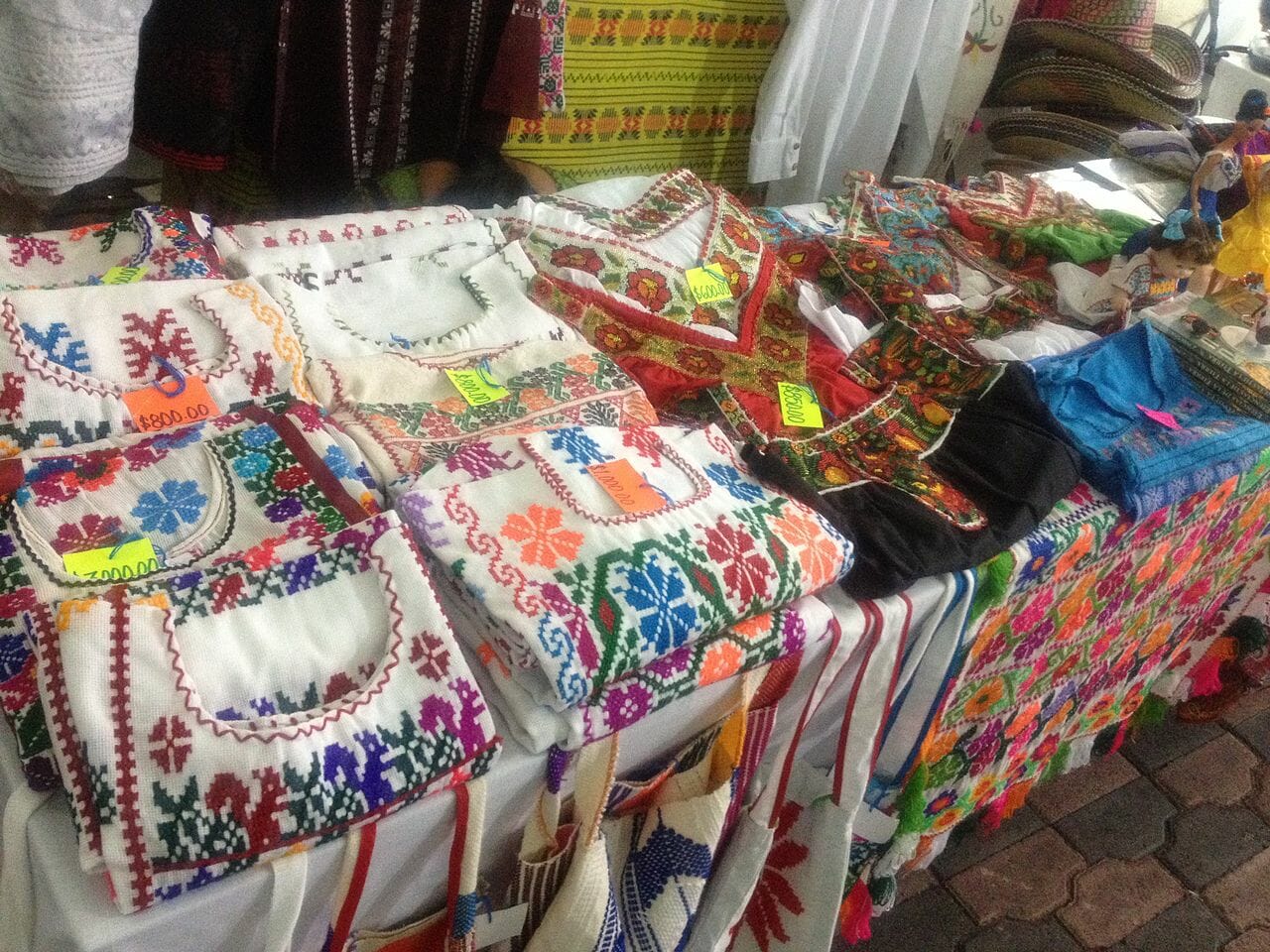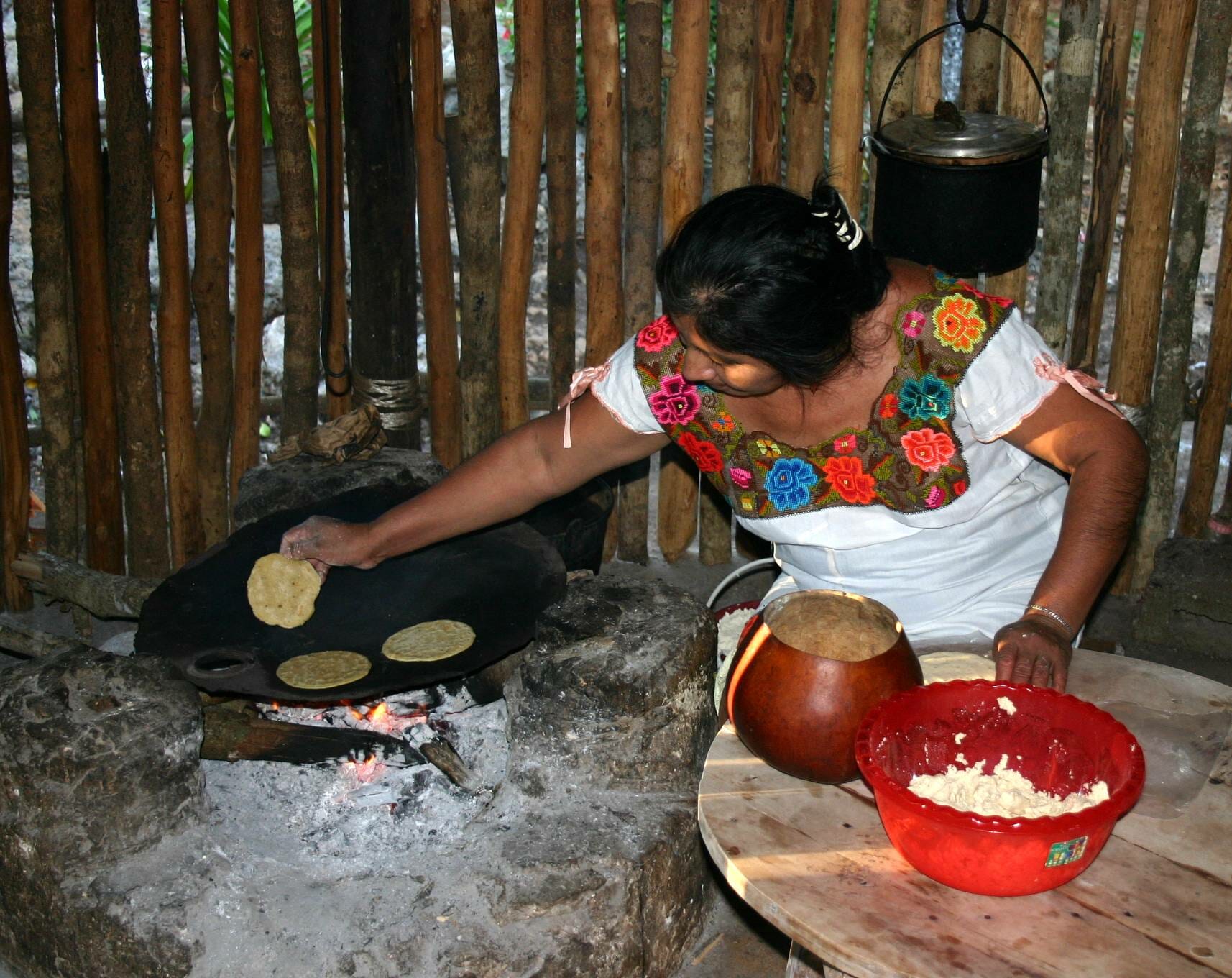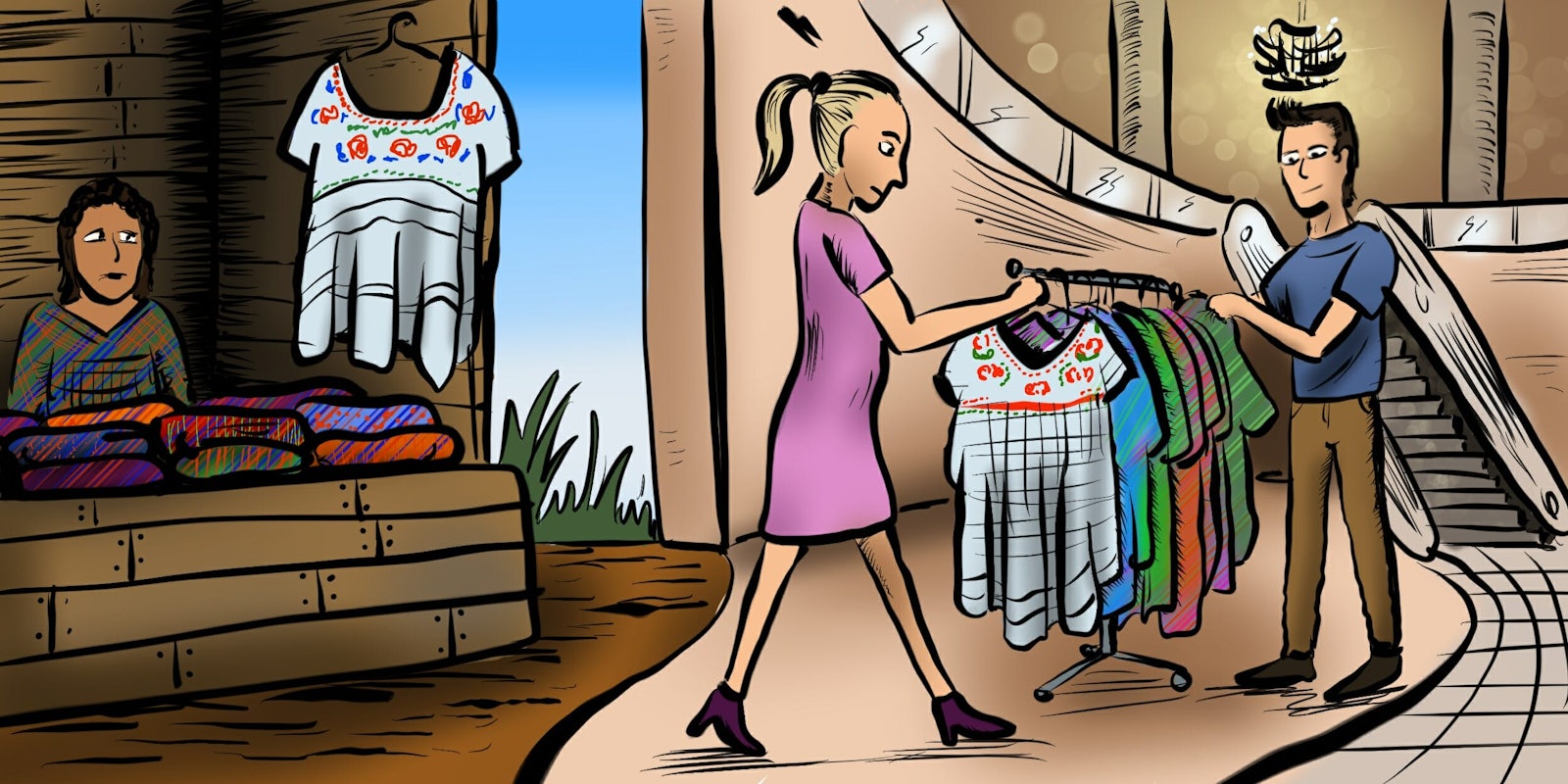What is cultural appropriation? If you’re searching for a concise definition, it’s more complicated than most. In many cases, it’s better explained through example. Take Utah teen Keziah Daum, who in April 2018 arrived at her high school prom wearing a red qipao, a tight, high-collared Chinese dress signaling upper-class status. Daum, who is white, simply captioned four photos of her and her date, “PROM.” In the photos, she poses with her date and her prom group. The dress, which she purchased at a vintage store, stands out distinctly from her friends’ gowns and traditional tuxedos.
https://twitter.com/daumkeziah/status/988115815068139520
Despite her intentions of being respectful and appreciative, spectators across the internet accused Daum of culturally appropriating the Chinese dress. Some Twitter replies said that she was using Chinese culture to elevate herself without paying mind to the cultural origin of the dress.
Others accused Americans of being OK with appropriating cultural events such as St. Patrick’s Day and Cinco de Mayo. Others alleged that if shame over cultural appropriation worked the “other” way around, people who aren’t from the West shouldn’t be able to use Western technology. Some Chinese people even applauded Daum, saying she was celebrating Chinese culture.
Ultimately, Daum responded to the criticism saying she genuinely had an appreciation for Chinese culture. She said the experience made her research appropriation and think more critically about what she wears.
Based on who you ask, Daum may not have culturally appropriated at all. But what is cultural appropriation? What are some cultural appropriation examples? And why is cultural appropriation “bad” if someone is genuinely showing appreciation for another culture?
What is cultural appropriation?
Cultural appropriation is “the act of taking or using things from a culture that is not your own, especially without showing that you understand or respect this culture,” according to the Cambridge Dictionary.
Cultural appropriation occurs when a more powerful person or institution projects the culture of a less powerful person, according to Dr. Luis Urrieta, an author and professor of cultural studies in education at the University of Texas at Austin. Urrieta says that appropriation involves this differential in power. It also often involves obscuring or erasing the meaning behind the cultural item.
A cultural item can be food, clothing, agricultural practices, inventions, techniques, technologies, and more. By appropriating an item without its meaning, it becomes more fashionable and marketable. Without the context of its history, the way we engage with a cultural item is transactional and exploitative rather than respectful.
And more often than not, the appropriator is praised for their use of the appropriated item. Meanwhile, the creators of this item continue to go unappreciated and undervalued themselves.
READ MORE:
- What does cisgender mean—and what is cisgender privilege?
- What it means to be transgender
- How big is the transgender population, really?
- Breaking down the difference between gender identity and sex
Cultural appropriation examples
In Daum’s situation, Urrieta explains that wearing clothing with cultural significance—without a relationship with that culture or any regard for its significance—can be an example of cultural appropriation.
Here’s another example: a white, affluent person from the U.S. buys huipiles, or traditional indigenous Mexican embroidered blouses, in bulk. They sell them to consumers without mentioning the cultural context of the blouses. They do not explain the creation process by the makers, and they do not maintain a lasting relationship with the creators. In this case, they would be participating in cultural appropriation.

Black cultural appropriation
There are several common examples of cultural appropriation exhibited in the U.S. called out in popular culture, particularly when it comes to appropriating Black culture.
Celebrities such as Kim Kardashian, Miley Cyrus, and Justin Bieber, and Katy Perry have all been called out for committing cultural appropriation by wearing their hair in Black hairstyles of cornrows or dreadlocks. By wearing Black hairstyles, these celebrities used the culture of Black people as a fashion statement. They didn’t hold any respect for the hairstyles’ meanings within the Black community.
But say these hairstyle wearers were to establish a meaningful relationship with the Black community. Maybe they promote underrepresented Black voices in their work or advocate for the Black Lives Matter movement. Still, sporting cornrows or dreadlocks can be seen as culturally appropriative. This is especially true because Black people continue to be undervalued and even punished at work for wearing their hair the same way.
Cultural appropriation of food
Food is another aspect of culture that can be appropriated. People can appropriate food by replicating a particular culture’s foods and selling them to a more powerful group of people without paying homage. This then allows the appropriator to capitalize on the opportunity. Ultimately, this takes the opportunity away from the person whose cultural practices are used to make the food.
There are many viral social media food trends in which restaurants or recipes where you’ve probably seen this. Restaurants and recipes have been called out for making traditional food and marketing it with no reference to those cultures. In Portland, for instance, two white women were ousted from the restaurant scene after they detailed how they adopted tortilla-making techniques from women in Mexico.
“The problem, of course, is that it’s unclear whether the Mexican women who handed over their recipes ever got anything in return. And now those same recipes are being sold as a delicacy in Portland,” Mic wrote at the time.

Can people of color appropriate white culture?
Cultural appropriation typically involves a differential of power, be it race or class. This means that cultural appropriation isn’t exclusively committed by white people against people of color, but also wealthy people against non-wealthy people. Urrieta says the dynamics of cultural appropriation go beyond “white vs. non-white” people, however, particularly when we take into account how cultural items might be marketed for consumption by people of color, and who controls those media or marketing tactics. The people in power are the ones who control these advertising strategies and impress these ideals for what is appropriate to appropriate.
Urrieta compares the complexity and intersectionality of cultural appropriation—across lines of class, race, and even gender—to a ball of yarn with multiple loose-hanging threads. To that end, it’s unclear if cultural appropriation by people of color is an imposition of consumer taste or a constructed need by the people of power.
Why is cultural appropriation bad?
Cultural appropriation that doesn’t come from a genuine place of appreciation has implications that go much deeper than one person’s mistake. Appropriation is tied to history, colonialism, imperialism, and world tours. It ties into modern-day tourism, and in the specific act of collecting “artifacts” from one place and taking them to a place with elevated power.
“In the West, some of those ‘pioneers’ were out there buying medicine bags from native people, digging up graves, taking cultural items from graves, pottery,” Urrieta says. “And now these items are in museums and communities are still trying to get these items back, especially if they were sacred items to them and to the community.”
For the people whose cultures are appropriated, this means different things. If someone makes a living by making cultural items for tourism consumption, they may know the items won’t be honored. But they might need the income. For these people, cultural appropriation may evoke a sense of loss, Urrieta says.
To understand the harm that appropriation does, we must also analyze the power someone has to use a cultural item. For example, when a white woman wears an indigenous patterned blouse, she might be rewarded for her appearance. An undocumented woman wearing the same blouse wouldn’t receive the same praise. In fact, she could be exoticized in harmful ways.
Cultural appropriation vs. cultural appreciation
Instead of participating in cultural appropriation, you can still share your understanding and your valuation for a culture’s items or practices by actively practicing cultural appreciation.
Urrieta says it’s important establish and maintain meaningful relationships with people from the communities that cultural items or practices originate from. This means that you’re understanding the history and meaning and fairly compensating the people you’re purchasing items or experiences from.
In some ways, cultivating this lasting relationship also means aligning yourself and working as an ally for the community. If you’re purchasing a person’s work, you can help them find outlets for their work. Then, you can help elevate them to be appropriately compensated.
“We [need to have] meaningful conversations, meaningful relationships with people who are being directly impacted by these issues, that are being displaced in these global economies where their culture is being commodified,” Urrieta says. “You know, really trying to figure out what we’re gonna do together. Not for them, but together with them and with other oppressed people here and abroad.”
READ MORE:
- What exactly is intersectionality? A complete history of the term
- Here’s what you should know about Latinx identity and history
- What is the difference between race and ethnicity?
- What does it mean to be genderqueer?
Are certain types of cultural appropriation worse than others?
While some types of cultural appropriation would be extremely distasteful and offensive to see today, other instances of cultural appropriation might make someone “take pause” and think more about the behavior and the intent of the appropriator, Urrieta says.
For example, “vaudeville” performances done in the late 1800s to early 1900s in which white people would wear Blackface makeup, and speak and behave as inaccurate, offensive caricatures of Black people would be met with immense pushback in the U.S. today (and, despite that pushback, continue to happen).
As far as a “spectrum” of appropriation goes and assessing the level of harm that appropriating an item does to its culture, we’d have to look at the specifics of a cultural item. This means asking what the item means to the people of the culture its from, whether that culture has given permission for the item to be used in a way that divests its origin and intended purpose laid out by the culture in the first place, and what the appropriation might mean for the item and the people of that culture.
How do you tell someone they are appropriating a cultural item?
In order to have a conversation about cultural appropriation, Urrieta says, the people involved have to be willing to go to that “uncomfortable space.” There’s a grey area between appreciation and appropriation. And sometimes, a situation can be both.
Urrieta says he starts that conversation by asking someone if they know the meaning behind what they’re doing or wearing. He suggests asking questions, such as if they understand the significance of the colors or designs used, or who made the design. He says that at that point, people will tend to get uncomfortable. Urrieta will then ask why they feel uncomfortable, and if they can explore that discomfort together.
This conversation is about working in this grey area together. It’s about seeing the commonalities between the person who is appropriating and the person who is calling them out. And ultimately, these conversations can benefit the people who make these cultural items, to honor them and compensate them appropriately, and find what more we can do to make this flow of culture more ethical and equitable.
Editor’s note: This article is regularly updated for relevance.




